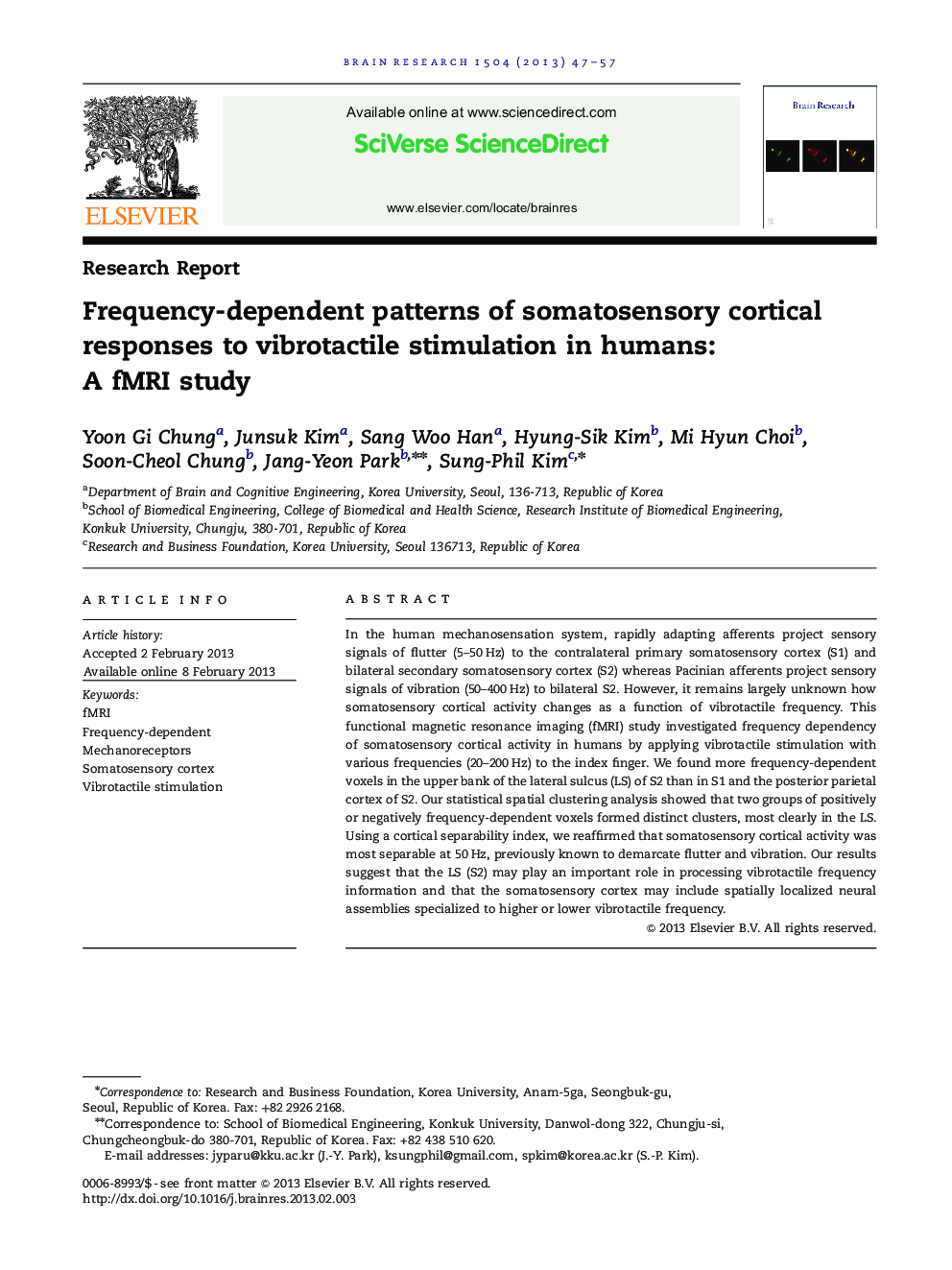| کد مقاله | کد نشریه | سال انتشار | مقاله انگلیسی | نسخه تمام متن |
|---|---|---|---|---|
| 4324770 | 1613935 | 2013 | 11 صفحه PDF | دانلود رایگان |

In the human mechanosensation system, rapidly adapting afferents project sensory signals of flutter (5–50 Hz) to the contralateral primary somatosensory cortex (S1) and bilateral secondary somatosensory cortex (S2) whereas Pacinian afferents project sensory signals of vibration (50–400 Hz) to bilateral S2. However, it remains largely unknown how somatosensory cortical activity changes as a function of vibrotactile frequency. This functional magnetic resonance imaging (fMRI) study investigated frequency dependency of somatosensory cortical activity in humans by applying vibrotactile stimulation with various frequencies (20–200 Hz) to the index finger. We found more frequency-dependent voxels in the upper bank of the lateral sulcus (LS) of S2 than in S1 and the posterior parietal cortex of S2. Our statistical spatial clustering analysis showed that two groups of positively or negatively frequency-dependent voxels formed distinct clusters, most clearly in the LS. Using a cortical separability index, we reaffirmed that somatosensory cortical activity was most separable at 50 Hz, previously known to demarcate flutter and vibration. Our results suggest that the LS (S2) may play an important role in processing vibrotactile frequency information and that the somatosensory cortex may include spatially localized neural assemblies specialized to higher or lower vibrotactile frequency.
► We studied the somatosensory cortical response to various vibrotactile frequencies.
► The primary (S1) and secondary (S2) somatosensory cortices differed in responses.
► There were more frequency-dependent (via linear correlation) fMRI voxels in S2.
► A ratio of negatively correlated voxels to positive ones was >1 in S1 and 1 in S2.
► The frequency-dependent voxels formed spatial clusters based on sign of correlation.
Journal: Brain Research - Volume 1504, 4 April 2013, Pages 47–57